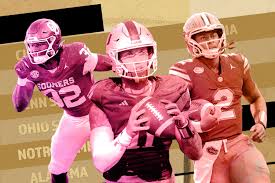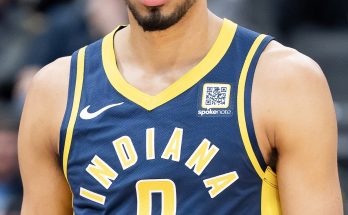College football is a game built on tradition, reputation, and constant reinvention. Every year the landscape shifts, sometimes subtly, other times drastically, but one thing that never changes is the debate over who the true powerhouses are. The process of creating power rankings is never easy, as it requires weighing past performance, future potential, roster depth, coaching, and the unpredictable nature of momentum. At this stage of the preseason outlook, my power rankings between spots twelve and ten highlight three programs that, while different in identity and historical trajectory, are all united by the same truth: they are trying to prove they belong among the game’s elite once again. Oklahoma, Miami, and Florida each sit in this crucial range, and their scouting reports reveal as much about where they’ve been as where they’re going.
Beginning with Oklahoma, a program synonymous with dominance in the Big 12 and now facing its transition into SEC life, the Sooners embody both consistency and lingering questions. For years, Oklahoma was known for its prolific offenses under coaches like Bob Stoops and Lincoln Riley, where quarterbacks were synonymous with Heisman consideration and wide-open offenses terrified defenses. That offensive legacy remains, but the move into the SEC has forced Oklahoma to re-examine its foundation. Brent Venables, the current head coach, has brought a defensive emphasis that the program desperately needed. His background as Clemson’s defensive coordinator proved that he knows how to build a top-tier defense, but the results so far have been mixed. Oklahoma fans expected immediate improvement, but the reality is that fixing defensive woes takes time, recruiting depth, and patience. Still, the Sooners are making strides. In their secondary, the infusion of young talent and the growth of veteran corners show that Venables is moving them toward SEC readiness. Their defensive line has more size and athleticism than in the past, a necessary evolution to compete with the trench-heavy teams they’ll now face annually.
Offensively, Oklahoma has a lot of reason for optimism. Their quarterback situation appears stable, with a combination of dual-threat capability and improved decision-making setting them up well for the season. The running game, long a staple in Norman, looks potent again, with a combination of physical runners and speedsters who can break off long gains. The offensive line, while needing more consistency, remains one of the better units in college football, built around a mix of veterans and highly recruited youngsters. The Sooners’ wide receivers aren’t quite as headline-grabbing as in past years, but there’s enough depth and speed to stretch the field, giving their quarterback plenty of opportunities to attack defenses. The question is whether Oklahoma can bring all of these parts together against top-tier competition. Power rankings are about projection, and while Oklahoma has the tools, they remain a work in progress. Sitting in the twelve spot reflects respect for their history, acknowledgment of their improvement, and recognition of the uncertainty that comes with their SEC challenge.
Miami, sitting one notch above, is perhaps the most polarizing program in this tier. For decades, the Hurricanes were the embodiment of swagger, dominance, and national championships. But the past two decades have been a revolving door of coaches, false starts, and unmet expectations. Still, with Mario Cristobal at the helm, there’s cautious optimism that Miami is finally building the infrastructure necessary for sustained success. Cristobal’s recruiting efforts have been relentless, and South Florida’s rich talent base gives the Hurricanes a natural advantage that they’re once again starting to leverage. Miami’s roster is increasingly filled with top-100 recruits, players who can stand toe-to-toe with the Alabamas, Georgias, and Ohio States of the world, but recruiting doesn’t always translate into immediate results. That’s where Cristobal faces the challenge of turning raw talent into cohesive production.
Quarterback play will be essential for Miami this season. While their offense has shown flashes, consistency has been lacking, particularly against quality opponents. The offensive line, which has long been a weakness, has been retooled under Cristobal, himself a former lineman who knows what it takes to dominate up front. With bigger, stronger, and more disciplined players in the trenches, Miami’s offense has the potential to be more balanced, opening up the passing game and creating more explosive opportunities. Their wide receiver corps has speed, but the question is who can become the reliable go-to option in clutch situations. The running backs, meanwhile, provide a nice blend of power and quickness, and their depth at that position suggests they’ll be able to withstand the grind of the season.
Defensively, Miami has the kind of athletes that can make highlight plays, but they’ve lacked the discipline and structure to be elite. The secondary is filled with playmakers, capable of generating turnovers and shutting down opposing wideouts, but too often they’ve been beaten on busted coverages or poor angles. Cristobal and his staff have emphasized fundamentals, and if that improvement carries over, Miami could surprise a lot of people. The front seven has talent but needs to show greater consistency against the run, something that has plagued the Hurricanes for years. In power rankings, Miami sits in the eleventh spot because their ceiling is incredibly high, but the doubts remain. Can they put it all together, or will they continue to hover on the edge of greatness without breaking through? The answer to that question will determine whether Miami finishes the season far above this ranking or slides back into mediocrity.
Finally, Florida rounds out this tier at the number ten spot, a program that, like Miami, has experienced peaks and valleys. The Gators are one of college football’s iconic brands, with three national championships in the last three decades and a history of producing elite players. Yet recent years have been turbulent, with coaching changes and inconsistent play marring the program’s trajectory. Billy Napier, their current head coach, has been tasked with stabilizing Florida and restoring them to SEC contention, but his tenure so far has been defined by growing pains. Still, Florida earns the tenth spot because their potential this season is undeniable.
Florida’s offense begins with its quarterback situation, which has been the subject of intense scrutiny. While they may not have the proven star power of some other programs, their signal-caller has shown flashes of both athleticism and toughness. The offensive system Napier runs is built around establishing the run and using play-action to create opportunities downfield. Florida’s running backs are a legitimate strength, with multiple players capable of breaking tackles and turning routine plays into big gains. The offensive line is still a work in progress, but Florida has invested heavily in recruiting and transfers to shore up that unit. If the line holds up, the Gators’ offense could surprise people with its balance and explosiveness.
On defense, Florida has the raw materials to be a nightmare for opponents. Their secondary features several NFL-caliber talents, and when they’re locked in, they can shut down even the most potent passing attacks. The linebackers have speed, giving them range to cover sideline to sideline, but their ability to diagnose plays quickly will determine how effective they are against elite SEC offenses. The defensive line has size and strength, and the coaching staff has emphasized rotation to keep players fresh throughout the game. Like Oklahoma and Miami, Florida’s challenge is consistency. Against weaker teams, they’ve looked dominant at times, but when the competition stiffens, lapses in discipline and execution have been exposed. Napier has made it clear that accountability is a core value of his program, and this season will test how far that culture shift has come.
Placing Florida in the tenth spot represents a recognition of their ceiling and their SEC pedigree. In a league that demands toughness every week, the Gators will face as difficult a schedule as anyone in the country, but that also gives them ample opportunity to prove themselves. If their young talent matures quickly and their veterans step up, Florida could climb much higher in the rankings by the end of the year. Conversely, if their inconsistency remains, they could slide just as quickly.
What unites Oklahoma, Miami, and Florida in this range of the power rankings is not just their talent, but their transitional states. All three are programs with rich traditions and passionate fanbases, all three have rosters that, on paper, can compete with the best, and all three are trying to bridge the gap between potential and reality. Ranking them twelve through ten is both a nod to their current standing and a recognition of how volatile their seasons could be. Each has enough upside to crash the top five if everything breaks right, but each also carries enough question marks to tumble into disappointment. That is the beauty and the challenge of college football: reputations are written on the field, and the line between glory and failure is thin.
For Oklahoma, the SEC transition will test every part of their program, but their offensive weapons and defensive improvements give them a chance to prove they belong. For Miami, Cristobal’s recruiting and cultural rebuild offer hope, but the Hurricanes must show they can translate talent into wins. For Florida, the SEC gauntlet provides both risk and reward, and Napier’s Gators must find consistency to turn potential into results. As the season unfolds, these three programs will not just fight for wins but for identity, relevance, and a spot among the sport’s true elite. Power rankings capture a moment in time, but for Oklahoma, Miami, and Florida, the true story will be written across the coming months, one game at a time, with each Saturday an opportunity to climb higher or slip further. That’s why they sit at twelve, eleven, and ten, perched on the edge of greatness but still with something to prove.



